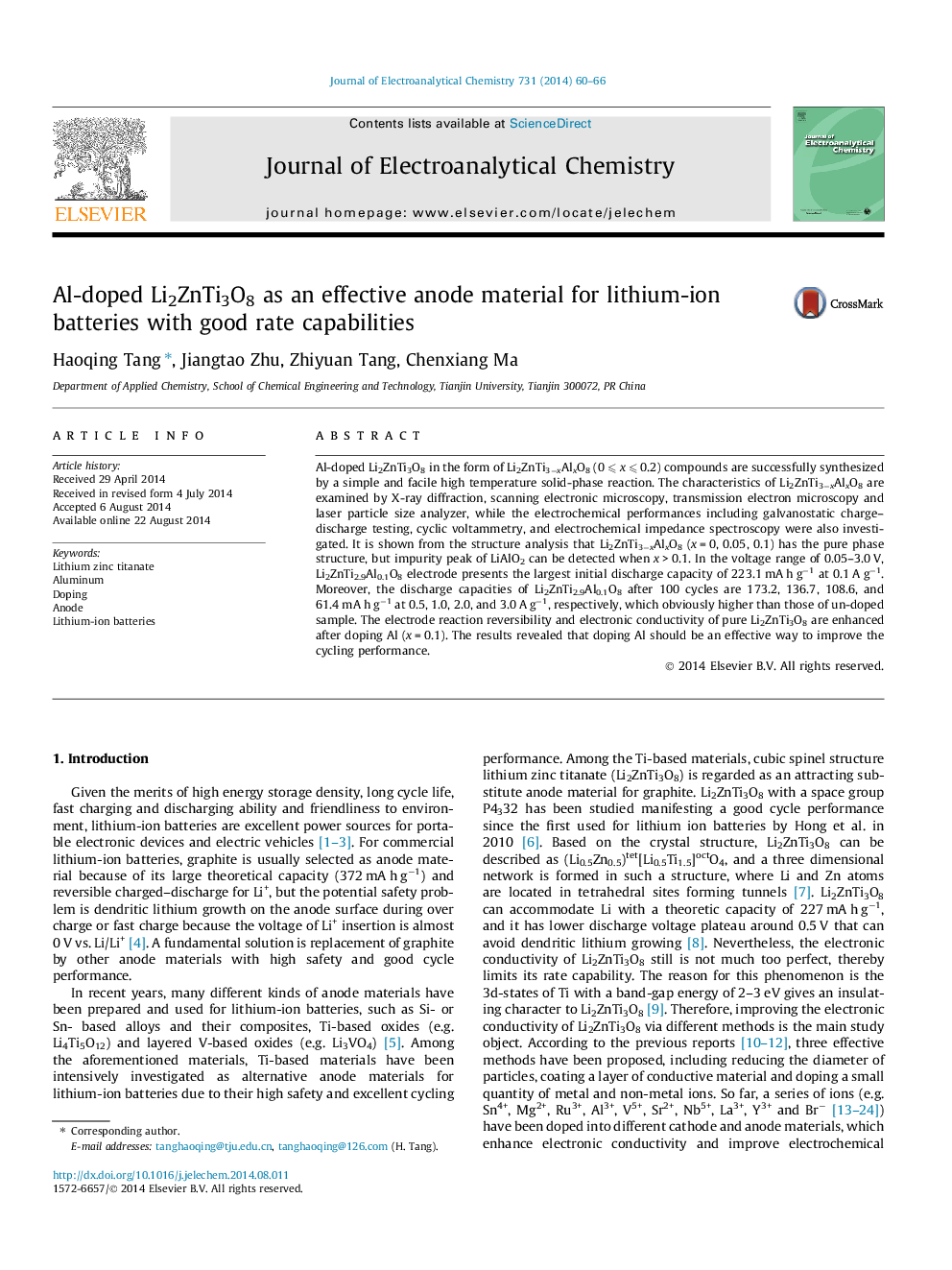| کد مقاله | کد نشریه | سال انتشار | مقاله انگلیسی | نسخه تمام متن |
|---|---|---|---|---|
| 218674 | 463212 | 2014 | 7 صفحه PDF | دانلود رایگان |

• Synthesis of Al doped lithium zinc titanate by a facile solid-state reaction method.
• Electrochemical properties were tested in a charge/discharge voltage range of 0.05–3.0 V (vs. Li/Li+).
• Al (x = 0.1) doped lithium zinc titanate had excellent high rate capability and cycling stability.
Al-doped Li2ZnTi3O8 in the form of Li2ZnTi3−xAlxO8 (0 ⩽ x ⩽ 0.2) compounds are successfully synthesized by a simple and facile high temperature solid-phase reaction. The characteristics of Li2ZnTi3−xAlxO8 are examined by X-ray diffraction, scanning electronic microscopy, transmission electron microscopy and laser particle size analyzer, while the electrochemical performances including galvanostatic charge–discharge testing, cyclic voltammetry, and electrochemical impedance spectroscopy were also investigated. It is shown from the structure analysis that Li2ZnTi3−xAlxO8 (x = 0, 0.05, 0.1) has the pure phase structure, but impurity peak of LiAlO2 can be detected when x > 0.1. In the voltage range of 0.05–3.0 V, Li2ZnTi2.9Al0.1O8 electrode presents the largest initial discharge capacity of 223.1 mA h g−1 at 0.1 A g−1. Moreover, the discharge capacities of Li2ZnTi2.9Al0.1O8 after 100 cycles are 173.2, 136.7, 108.6, and 61.4 mA h g−1 at 0.5, 1.0, 2.0, and 3.0 A g−1, respectively, which obviously higher than those of un-doped sample. The electrode reaction reversibility and electronic conductivity of pure Li2ZnTi3O8 are enhanced after doping Al (x = 0.1). The results revealed that doping Al should be an effective way to improve the cycling performance.
Journal: Journal of Electroanalytical Chemistry - Volume 731, 1 October 2014, Pages 60–66